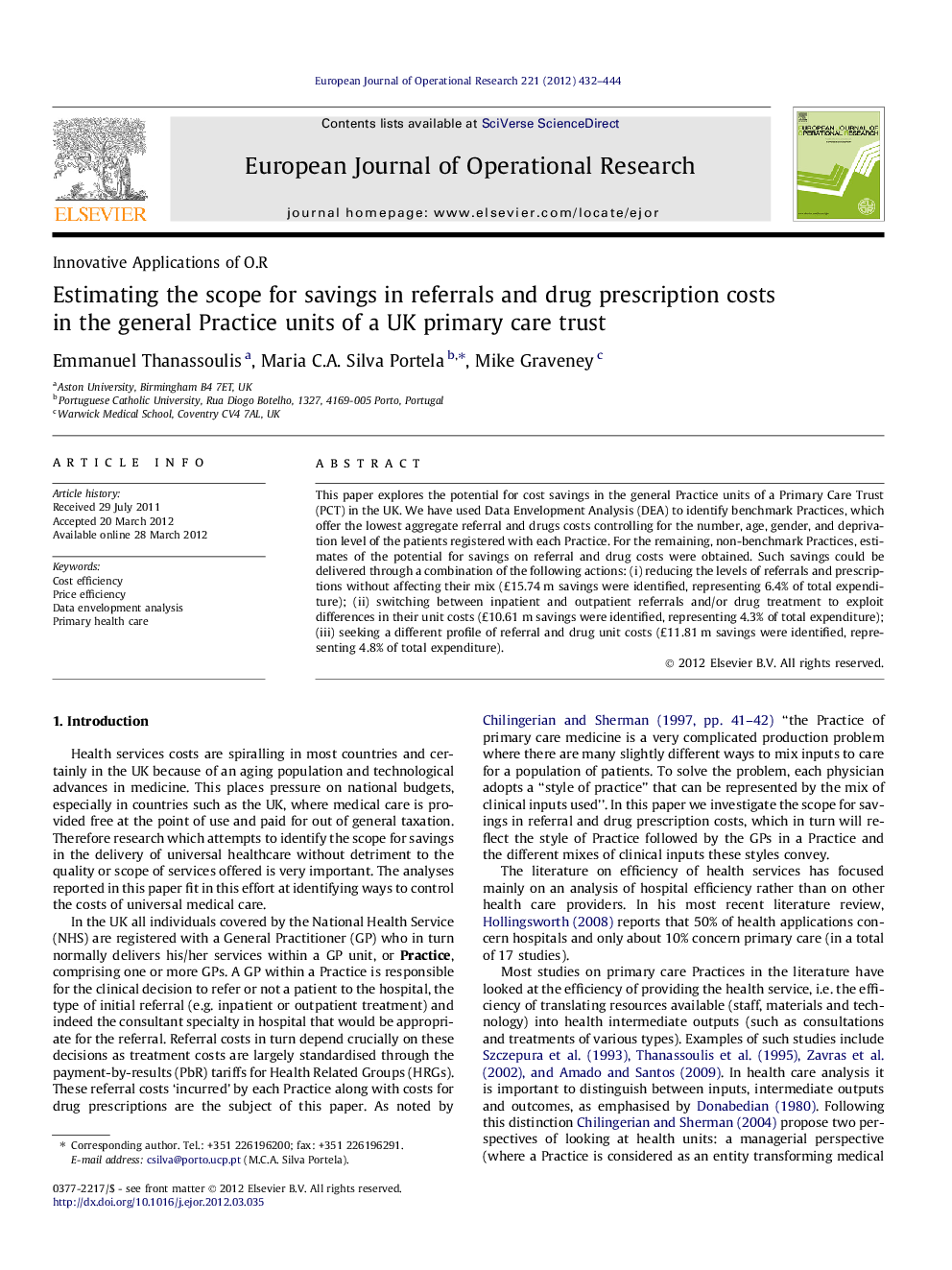| Article ID | Journal | Published Year | Pages | File Type |
|---|---|---|---|---|
| 481393 | European Journal of Operational Research | 2012 | 13 Pages |
This paper explores the potential for cost savings in the general Practice units of a Primary Care Trust (PCT) in the UK. We have used Data Envelopment Analysis (DEA) to identify benchmark Practices, which offer the lowest aggregate referral and drugs costs controlling for the number, age, gender, and deprivation level of the patients registered with each Practice. For the remaining, non-benchmark Practices, estimates of the potential for savings on referral and drug costs were obtained. Such savings could be delivered through a combination of the following actions: (i) reducing the levels of referrals and prescriptions without affecting their mix (£15.74 m savings were identified, representing 6.4% of total expenditure); (ii) switching between inpatient and outpatient referrals and/or drug treatment to exploit differences in their unit costs (£10.61 m savings were identified, representing 4.3% of total expenditure); (iii) seeking a different profile of referral and drug unit costs (£11.81 m savings were identified, representing 4.8% of total expenditure).
► We model referral and drug prescription costs of general Practice units in the UK. ► DEA is used to compute cost efficiency and its technical and allocative components. ► A new price efficiency model is introduced, as Practices can control their prices. ► The main scope for savings lies on the reduction of the volume of drugs prescribed. ► A large scope for savings lies on the reduction of the price of inpatient referrals.
